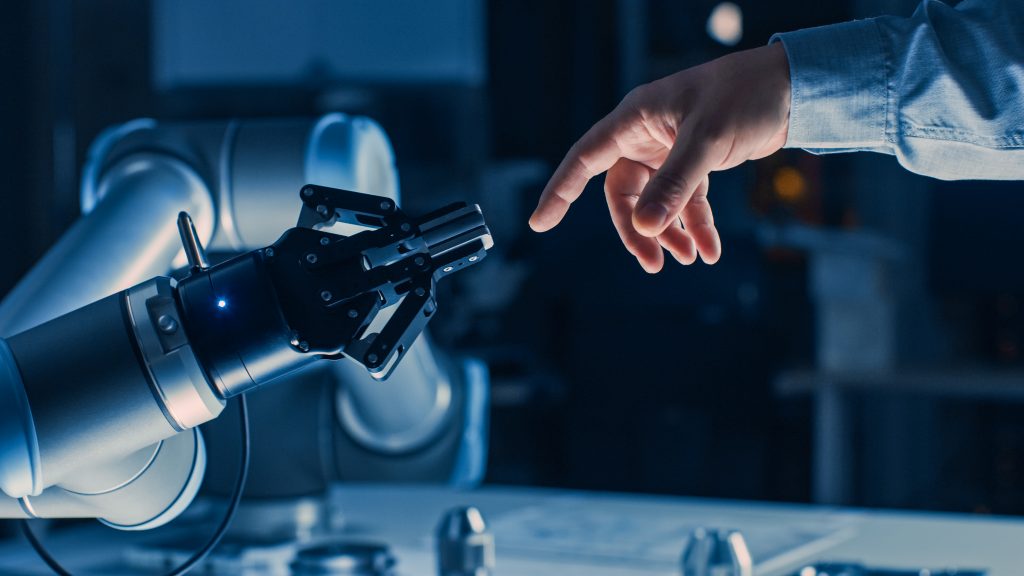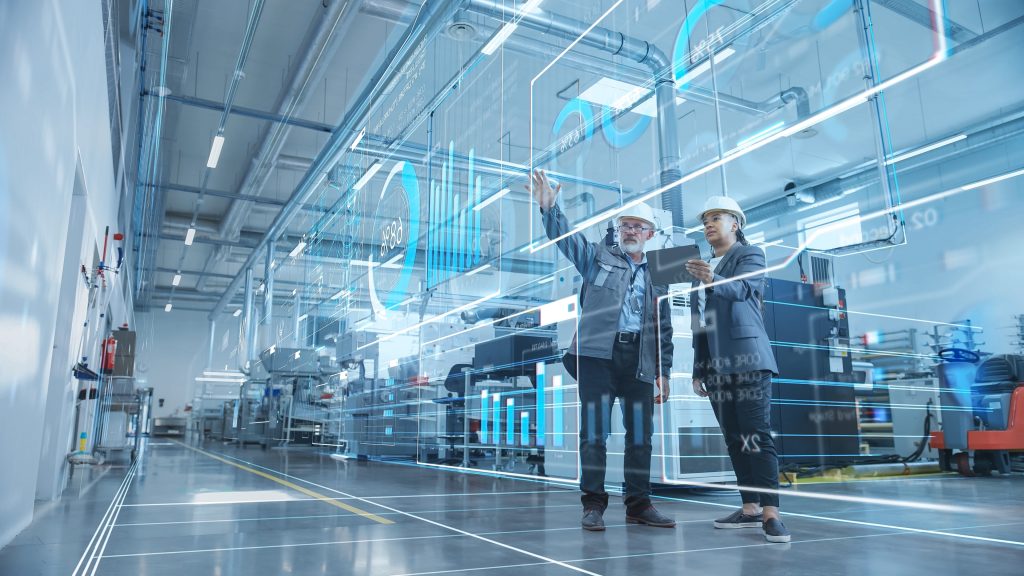
Despite the increasing level of implantable intelligence in the robot, there are situations in which human intervention is necessary to supervise the task being carried out by the robot or even to guide it remotely.

Provision of robotic systems with optical capabilities so that they are able to flexibly modify their approach and guidance trajectories, adapting to the context conditions.

Robot prototypes of proofs of concept of solutions linked to logistics operations e.g. containerisation, product sorting, returns management. The operations involve product recognition, product handling and its placement in containers or order boxes.

Robot prototypes of proofs of concept of solutions linked to pallet logistics operations such as palletising or depalletising. The operations involve the recognition of products on pallets in both single-reference and multi-reference configurations, their handling

Coordinated and online programming of the trajectory of the arms of a dual-arm robot considering the information received from external perception systems that provide real-time information on external restrictions that condition its movement and taking

Starting from a digitalised work environment in which CAD models are available, an operator, with no specific training in robot programming can enter information about the operations to be carried out, that are interpreted by

Establishing communication between people and robots to carry out tasks in collaboration, both verbal and gestural, establishing the necessary safety measures and regulations in an environment in which both people and robots move.

This service has two strategies: the static one referring to programming the trajectory after perceiving the environment and, based on the information captured on position of the displacement, being able to identify the most optimal

Support to Hardware/Software technologies development and validation through integration support and testing (interoperability, connectivity, compatibility) in the execution of pre-defined manufacturing-related tasks.

Validation and benchmarking of Hardware & Software technologies as well as innovative tools at semi-industrial scale (reliability, performance, robustness) through the experimentation of the mobile robot solutions in the execution of planned manufacturing tasks.

Support to Hardware/Software technologies development and validation through integration support and testing (interoperability, connectivity, compatibility) in the use of industrial robots (including exoskeletons) in the field of manufacturing.

Validation and benchmarking of Hardware & Software technologies as well as innovative tools at semi-industrial scale (reliability, performance, robustness) through the experimentation in the use of industrial robots (including exoskeletons) in the field of manufacturing.

Support to Hardware/Software technologies development and validation through integration support and testing (interoperability, connectivity, compatibility) in the execution of pre-defined manufacturing-related tasks.

Validation and benchmarking of Hardware & Software technologies as well as innovative tools at semi-industrial scale (reliability, performance, robustness).

Characterization of the performance of the cobot control system through test batteries and measurements to evaluate trajectory precision and collision avoidance against predefined objective indicators. The result will be a technical report describing the conducted

Evaluation of the performance offered by different advanced algorithms for autonomous navigation. through test batteries and measurements to assess their behavior against predefined objective indicators. Two possibilities are considered: – the use of real machines

Evaluation of customer’s autonomous navigation strategies against different use cases. Analysis of performance. Proposal and initial evaluation of alternative, complementary or improved solutions to maximice the capabilities and perfomance of the proposed solution in objective




This service is dedicated to the testing and experimenetation with AI tools enabling intuitive and ad hoc robot programming. A diverse set of collaborative robotic cells, including low payload, high payload, and mobile robots, offer









High-frequency and high-accuracy measurements can help to understand flexibibity/modeshapes of flexible products, or help to understand dynamic behaviour of products in a pile or on a moving conveyor belt.

To minimize time spent in programming how to perform a task, the user can teach the robot by demonstration. This can be done by first stearing the robot by hand, while monitoring its state. Eventually

Experiment with one or two Panda cobots to investigate if they can add value in the production line. A single arm could be utilized for product singulation, e.g. in a bin- or heap picking task.





Views and opinions expressed are however those of the author(s) only and do not necessarily reflect those of the European Union or the Directorate-General for Communications Networks, Content and Technology. Neither the European Union nor the granting authority can be held responsible for them.
© copyright 2024 AI-Matters
© copyright 2024 AI-Matters